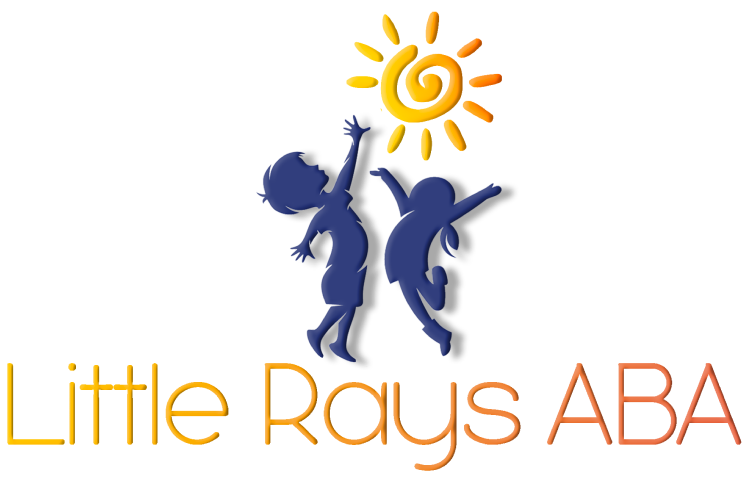Technology-Assisted Learning for Autism
Benefits of Assistive Technology
Assistive technology plays a crucial role in supporting individuals with autism, enhancing their learning experiences and daily living skills. These tools can significantly aid children with learning and thinking differences in the classroom. Examples of assistive technology include:
- Audio players and recorders
- Timers
- Reading guides
- Seat cushions
- FM listening systems
- Calculators
- Writing supports
- Graphic organizers
- Enlarged paper/workspace
These tools help in various ways, such as improving focus, aiding in communication, and providing structure. For instance, timers can help manage time effectively, while graphic organizers assist in visualizing information, making it easier to understand and retain.
| Assistive Technology | Purpose |
|---|---|
| Audio Players and Recorders | Enhance auditory learning |
| Timers | Manage time effectively |
| Reading Guides | Aid in reading comprehension |
| Seat Cushions | Improve focus and comfort |
| FM Listening Systems | Enhance auditory input |
| Calculators | Assist in mathematical calculations |
| Writing Supports | Facilitate writing tasks |
| Graphic Organizers | Visualize information |
| Enlarged Paper/Workspace | Provide ample space for writing and drawing |
For more information on how these tools can support different autism learning styles, visit our dedicated section.
Communication Enhancement through Apps
Technology can significantly improve communication skills for individuals with autism through various apps and features on devices. These tools cater to different levels and abilities, making communication more accessible and effective.
Communication apps can help individuals with autism express their needs, preferences, and emotions. Some popular apps include:
- Proloquo2Go: A symbol-based communication app that helps non-verbal individuals communicate.
- Avaz: An augmentative and alternative communication (AAC) app designed for children with autism.
- Speech Blubs: An app that uses video modeling to encourage speech development.
By incorporating these apps into daily routines, individuals with autism can improve their communication abilities, leading to better social interactions and increased independence. For more on how technology can support visual learning strategies for autism and other learning styles, explore our related articles.
Technology-assisted learning for autism offers numerous benefits, from enhancing communication to providing essential support in the classroom. By leveraging these tools, individuals with autism can achieve greater success and independence in their daily lives.
Visual Schedules and Independent Living
Utilizing Tablets for Task Completion
Visual schedules on tablets can significantly assist children with autism in completing tasks and managing routines independently. These schedules provide a structured and predictable environment, which is appealing to many individuals with autism.. By using visual schedules, children can better understand and follow daily routines, reducing anxiety and increasing task completion rates.
| Task | Completion Rate with Visual Schedules (%) |
|---|---|
| Morning Routine | 85 |
| School Preparation | 90 |
| Homework | 80 |
| Bedtime Routine | 88 |
Incorporating tools such as iPads and tablets into daily routines may positively influence the achievement levels of autistic students. These devices can display step-by-step instructions, visual cues, and timers, helping children stay on track and complete tasks more efficiently.
Developing Self-Care Skills
Developing self-care skills is crucial for fostering independence in children with autism. Technology-assisted learning, particularly through the use of tablets, can play a significant role in teaching these essential skills. Visual schedules on tablets can guide children through self-care routines, such as brushing teeth, washing hands, and dressing.
| Self-Care Skill | Improvement Rate with Visual Schedules (%) |
|---|---|
| Brushing Teeth | 75 |
| Washing Hands | 80 |
| Dressing | 70 |
| Bathing | 65 |
Figures courtesy Autism Speaks
By breaking down self-care tasks into manageable steps and providing visual prompts, children can learn and master these skills independently. The structured and repetitive nature of visual schedules helps reinforce routines, making it easier for children to remember and perform self-care tasks without assistance.
In summary, utilizing tablets for visual schedules and self-care skill development can greatly enhance the independence and daily living skills of children with autism. By leveraging technology-assisted learning, parents and educators can create a supportive and effective learning environment for these children.
Empowering Decision-Making and Self-Advocacy
Fostering Independence through Technology
Technology can play a significant role in empowering individuals with autism to make decisions and express their preferences, fostering self-advocacy skills crucial for transitioning into adulthood. Devices such as smartphones and tablets offer various applications that support decision-making and independence.
For example, apps designed for task management can help individuals with autism plan their daily activities, set reminders, and track their progress. These tools enable them to take control of their schedules and responsibilities, promoting a sense of autonomy. Additionally, communication apps can assist in expressing needs and preferences, further enhancing self-advocacy.
| Technology | Function | Benefit |
|---|---|---|
| Task Management Apps | Plan and track activities | Promotes autonomy |
| Communication Apps | Express needs and preferences | Enhances self-advocacy |
Motivating Positive Behavior with Apps
Devices like smartphones and tablets can serve as motivating tools for children with autism, using apps or games as rewards for positive behavior such as completing chores or homework assignments. These apps can be tailored to individual preferences, making them highly effective in encouraging desired behaviors.
Behavioral apps often include features such as visual schedules, token systems, and interactive games that provide immediate feedback and rewards. This positive reinforcement helps in building and maintaining good habits, while also making the learning process enjoyable.
| App Feature | Function | Benefit |
|---|---|---|
| Visual Schedules | Organize tasks visually | Reduces anxiety |
| Token Systems | Reward positive behavior | Encourages good habits |
| Interactive Games | Provide immediate feedback | Makes learning fun |
By integrating technology into their daily routines, individuals with autism can develop essential life skills, enhance their independence, and improve their overall quality of life. For more tips on effective learning techniques, explore our resource on auditory learning techniques for autism.
Video Modeling for Engaging Learning
Video modeling is a visual teaching method that uses videos on tablets or smartphones to help individuals with autism learn various skills. This approach can be particularly effective in enhancing skill acquisition and increasing interest and understanding.
Enhancing Skill Acquisition
Video modeling has proven to be a powerful tool in teaching individuals with autism a wide range of skills, from hygiene practices to job-related tasks. By watching videos that demonstrate the desired behavior or skill, individuals with autism can observe and imitate the actions, leading to better skill acquisition. According to Autism Speaks, video modeling can help individuals with autism learn in an engaging way, making it easier for them to grasp new concepts and routines.
Incorporating tools such as iPads and tablets into daily routines can positively influence the achievement levels of autistic students. Emerging research in technology-assisted interventions in autism suggests that these devices can be highly effective in supporting learning and development. The use of video modeling on these devices allows for repeated viewing, which can reinforce learning and help individuals with autism master new skills.
Increasing Interest and Understanding
One of the key benefits of video modeling is its ability to increase interest and understanding among individuals with autism. People with autism spectrum disorder (ASD) tend to enjoy interacting with computers and technology, as these interactions occur in a safe and trustworthy environment. This positive engagement can lead to a more effective learning experience.
Studies have shown that students on the autism spectrum enjoy playing games, which provides a safe environment for them to learn and develop skills. By incorporating game elements into video modeling, educators can create an enriched learning environment that captures the interest of individuals with autism and enhances their understanding of the material.
The use of video modeling can also support the development of social skills. Advancements in artificial intelligence have led to the creation of sophisticated robots that can improve social skills among children with ASD. These robots, combined with video modeling, can provide a comprehensive approach to teaching social interactions and other important skills.
Augmentative Communication Devices
Augmentative and Alternative Communication (AAC) devices play a crucial role in supporting individuals with autism. These devices enhance communication abilities, promote independence, and facilitate social interactions.
Supporting Communication for All Ages
Assistive technology, including AAC devices, can support and enhance communication for individuals with autism of all ages. These devices range from simple picture boards to sophisticated speech-generating devices. They help individuals who are non-verbal or have limited speech capabilities to express their needs, thoughts, and emotions effectively.
| Age Group | Common AAC Devices | Benefits |
|---|---|---|
| Children | Picture boards, tablets with communication apps | Enhances early communication skills, reduces frustration |
| Teens | Speech-generating devices, smartphones with AAC apps | Supports academic participation, fosters social interactions |
| Adults | Advanced speech devices, customized AAC systems | Promotes independence, aids in professional settings |
AAC devices do not hinder the development of natural speech. Instead, they provide a foundation for communication that can evolve as the individual matures.
Expanding Social Interactions
AAC devices also play a significant role in expanding social interactions for individuals with autism. These devices enable users to participate in conversations, engage in social activities, and build relationships. By providing a means to communicate effectively, AAC devices help reduce social isolation and increase opportunities for meaningful interactions.
Devices like smartphones and tablets can serve as motivating tools for children with autism. Apps or games can be used as rewards for positive behavior, such as completing chores or homework assignments. This not only encourages positive behavior but also makes communication more engaging and enjoyable.
| Device | Social Interaction Benefits |
|---|---|
| Tablets with communication apps | Facilitates group activities, supports peer interactions |
| Speech-generating devices | Enables participation in conversations, enhances social confidence |
| Smartphones with AAC apps | Provides on-the-go communication, supports independence in social settings |
The structured and predictable environment provided by technology is appealing to many individuals with autism. It allows for the maintenance of routines and repetitive behaviors without causing discomfort.
By leveraging AAC devices, individuals with autism can achieve greater independence and improved social interactions, leading to a more fulfilling and connected life.
AI in Education for Autism
Artificial Intelligence (AI) is transforming the educational landscape, offering significant benefits for students with autism. By leveraging AI, educators can provide personalized learning experiences and improve efficiency in managing educational tasks.
Personalized Learning with AI
AI tailors educational content to each student's unique learning style and pace, enabling every student to master concepts at their own speed. This is particularly beneficial for students with autism, who often have diverse learning needs. Platforms like DreamBox and Smart Sparrow analyze student responses in real time to adapt lessons dynamically.
| Platform | Key Feature | Benefit for Autism |
|---|---|---|
| DreamBox | Real-time response analysis | Adapts lessons to individual learning pace |
| Smart Sparrow | Dynamic lesson adaptation | Customizes content to unique learning styles |
AI-driven assistive technologies also support students with disabilities, ensuring a more effective learning environment. For example, speech recognition software like Notta transcribes spoken words into text, aiding hearing-impaired students. These tools can be particularly useful for non-verbal students with autism, enhancing their ability to communicate and learn.
Automation for Educator Efficiency
AI automates various administrative tasks, significantly reducing the workload on educators. This allows teachers to focus more on personalized instruction and student engagement. Tools like Gradescope provide consistent and objective grading of assignments, while AI scheduling software helps optimize class timetables and resource allocation.
| Tool | Function | Benefit for Educators |
|---|---|---|
| Gradescope | Automated grading | Consistent and objective assessment |
| AI Scheduling Software | Timetable optimization | Efficient resource allocation |
AI also enhances the security and integrity of assessments through advanced proctoring and plagiarism detection. Tools like Turnitin check for originality in student submissions, ensuring academic honesty. This is crucial for maintaining the credibility of educational achievements.
By integrating AI into the educational process, schools can create a more inclusive and efficient learning environment for students with autism.
Conclusion
Technology-assisted learning offers transformative benefits for individuals with autism, enhancing communication, fostering independence, and supporting daily living skills. By integrating assistive tools, apps, and AI-driven solutions, families and educators can create personalized learning experiences that empower children with autism to thrive.
Want to learn more about how technology can support your child's development? Contact Little Rays ABA today and discover our tailored ABA therapy programs designed to meet your child's unique needs!
Sources:
- https://www.allstaraba.org/
- https://www.autismspeaks.org/tool-kit-excerpt/how-technology-can-help
- https://www.ncbi.nlm.nih.gov/pmc/articles/PMC6832622/
- https://www.asha.org/public/speech/disorders/aac/
- https://www.autismspeaks.org/technology-and-autism
Unlock Your Child's Potential with Expert ABA Therapy!
At Little Rays ABA, we provide compassionate, evidence-based ABA therapy to help children with autism thrive. Our personalized approach fosters growth in communication, social skills, and independence.
Get In Touch With Us Today to Get Started With ABA Therapy!
Related Posts
MENU
GET IN TOUCH
7117 San Salvador Dr Boca Raton, FL 33433
3200 Collins Ave Miami Beach, FL 33140





